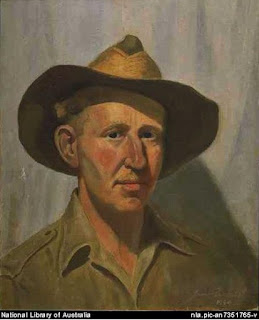Designer | Not known |
Maker | James Farrell |
Marks | Incised “James Farrell” to base |
Description | Slipware bowl with long tab handle curving upwards with rounded tip. Harlequin interior. Clear glaze to interior and exterior, foot unglazed. |
Condition | Very Good |
Number | No number |
Production Date | Probably late 1940s |
Width | 117mm |
Depth | 40mm |
Length (with handle) | 147mm |
Weight | 200gm |
Volume | 250ml |
Acquisition | E-Bay Feb 2012 |
Rameking Reference Number | JFA 001-003 |
These slipware ramekins are of a similar design to early June Dyson ramekins marked “Lorrant” that were made in the late 1940s. There were so many small potteries around in those days and many only had a small output.
Slipware is a decorative technique using slip, which is a liquid mixture of fine clay and water with a mayonnaise consistency. Used in casting and decoration. the slip can be coloured with oxides or coloured clays and applied to the vessel by dipping or painting, or trailed on like icing on a cake.
These ramekins were made by Victorian artist James Farrell. Like many artists of his day, James made ramekins to supplement his income from painting. He was never a big seller (of either ramekins or paintings) and even today his paintings don’t go for that much. His portrait style is derivative and his landscapes look like either backdrops for an architects plans or primative blobs. Before you art-nazi’s get excited, at least have a look at them, they are really not that good.
Born in Wangaratta, Victoria on the 17th of August 1902, James Francis Farrell studied at the National Gallery School, Melbourne (1929-1932), now The Victorian College of the Arts. The opening passage in his book says; "For me, life began in 1929, the day I walked into the Drawing School at the Melbourne National Gallery...this, I said to myself, is where I belong." James was a member of the Victorian Artist's Society and exhibited widely and is well represented in the Australian War Memorial, Canberra. One of his private teachers (1938) was Rupert Bunny.
Over the course of his life, James held 15 one-man exhibitions. He had served in the Australian Army during the Second World War with an anti-aircraft battery in Exmouth Western Australia where he developed a love of Australian landscape. Not only was James a painter, he was also a ceramic artist and watercolourist. In 1991 he initiated an acquisitive award for self-portraiture to increase the collection of the Castlemaine Art Gallery. They now have five of his works. The award is very popular. James died at the age of 97 in 1999. There is a self portrait of James, (oil on canvas 50 x 43 cm) painted in 1944 that forms part of the National Gallery collection in Canberra.
James Francis Farrell 1902-1999




I bought a couple of these about 10 years ago in Lorne (for $12, I think) & have always wondered who James Farrell was, so thanks for the biography. Mine are a little deeper & not quite as wide. They are a dark metallic brown on the outside with glazed pastel colours (one green, one yellow) on the inside. They both have a matching saucer (also signed) - but I guess the handle shape suggests that they are ramekins & not cups.....
ReplyDelete